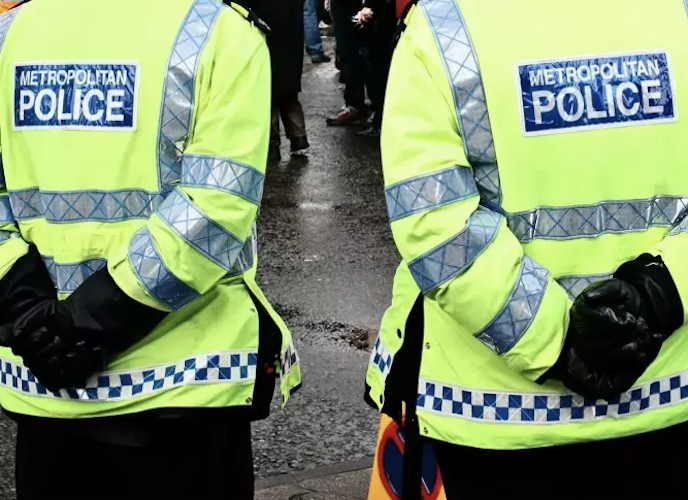The headline figure is, in its grim way, good news, at least relatively so. During the calendar year 2020, the Metropolitan Police investigated 126 homicides in London, compared with 150 in 2019 and 133 in 2018. On the other hand, the 126 total is an increase compared with the 122 investigated in 2017, the 109 in 2016, the 119 in 2015 and the 94 in 2014. What explains these variations and what are the lessons for law enforcement and crime prevention in the capital?
Crime figures can be confusing and deceptive. It’s always worth looking at them in a bit more detail. Covering both murder and manslaughter, 126 isn’t actually the full London homicide total for 2020, because there were two others that the British Transport Police investigated, rather than the Met, increasing the number to 128. Then there are the different types and locations of those killings. City Hall, which provided the figures, has helpfully broken the total down to show some of the detail of the 126 cases looked into by the Met.
- 31 of them were categorised as domestic violence offences, included 12 resulting from stabbing.
- 44 of the homicides took place in a dwelling and 71 of them on the street.
- Of the 126 victims, 14 were teenagers and 40 were aged between 20 and 24.
- 31 of the homicides were assessed as “gang-related”.
- In 14 cases the killer used a firearm, and in 71, a knife.
Given the (wholly appropriate) high concern about serious youth violence in recent years and the large amount of media coverage it has received, it’s worth noting that a small majority of homicide victims in 2020 were not under the aged of 25, and that the percentage as well as the number of victims in that age group was smaller in 2020 than in the previous three years. Also, the 31 domestic violence homicides are an important reminder of how large that problem is. Taken as a whole, the simple breakdown above is an indicator of the variety of homicides in London as well as their incidence, and not only in 2020.
So what might account for the fluctuations in the annual totals and what are the best ways to reduce all forms of homicide? Crime as a whole fell sharply during April and May last year, as the first lockdown bit, though at the same time there was a sharp rise in recorded drug offences resulting from increased – and controversial – police use of stop-and-search.
Perhaps that, combined with the effects of the lockdown itself, disrupted the drug trade and the extreme forms of violence associated with it – the chilling “new phenomenon” Met commissioner Cressida Dick told MPs about in March 2019. At the end of that year, an increasingly competitive drugs market, along with with austerity and a general rise in youth culture violence were listed by a criminologist working for the Met as “the top two or three explanations” for London homicides in 2019 reaching a ten-year high.
If Covid has been a factor in the slightly less bad homicide figures for 2020, that might be big warning against complacency once the virus fades, although both Dick and her deputy Sir Stephen House had spoken at the start of last year of some signs that general upward trends in serious violence were starting to change for the better.
Clues about long term solutions can be found in a report for the Home Office published in March last year called Trends and Drivers of Homicide, although it begins by observing that those drivers are “not well understood”. That’s made it difficult to know how best to respond to a homicide rate rise of 39% across England and Wales between 2015 and 2018 (no, it’s never been just a London problem).
The prime suspects the study lists are alcohol, drug markets – notably important in relation to sudden increases in homicide trends – and the effectiveness of the criminal justice system (as distinct from the severity of punishments). Levels of police resources and the types of activities they pursue “can drive homicide trends but haven’t always done so,” the researchers write.
The complexity of the issue, the varieties and different contexts for homicides, and the shortage of evidence pointing clearly towards – in the Home Office study’s words – “a simple, unarguable policy ‘to-do’ list”, underline the need to be wary of bold claims by politicians that they have magic solutions for further reducing the number of homicides in London – something to keep firmly in mind, especially in a mayoral election year.
OnLondon.co.uk provides fair and thorough coverage of the UK capital’s politics, development and culture. It depends greatly on donations from readers. Give £5 a month or £50 a year and you will receive the On London Extra Thursday email, which rounds up London news, views and information from a wide range of sources, plus discount and exclusive offers on events and publications. Click here to donate directly or contact davehillonlondon@gmail.com for bank account details. Thanks.


The causes noted are simply the scenario of the crime. The real reason is men’s inability to control their anger, in my opinion.
for the 8 years covered in the article the average homicides per annum is 120 the statistical variation (one sigma ) *is 11 .Only one year really stands out,2019 a 3 sigma variance i e apart from 2019 all the fluctuations are chance. wasnt 2019 the peak year for country lines turf wars ??
“City Hall, which provided the figures”
I can’t find them on their website, do you have a link? I’m particularly interested to know what happened to domestic murders between 2019 and 2020, given the apocalyptic forecasts re lockdown.